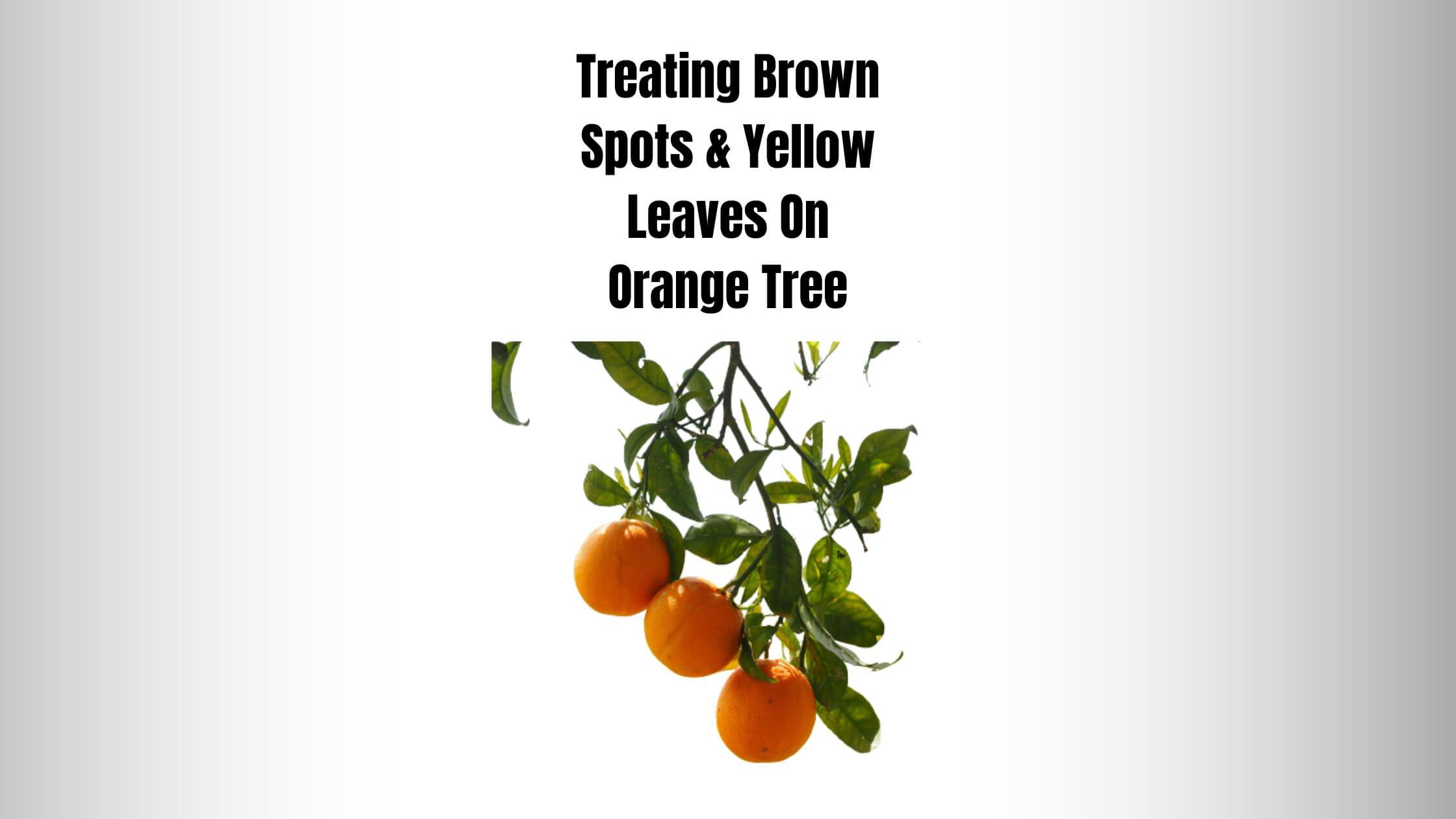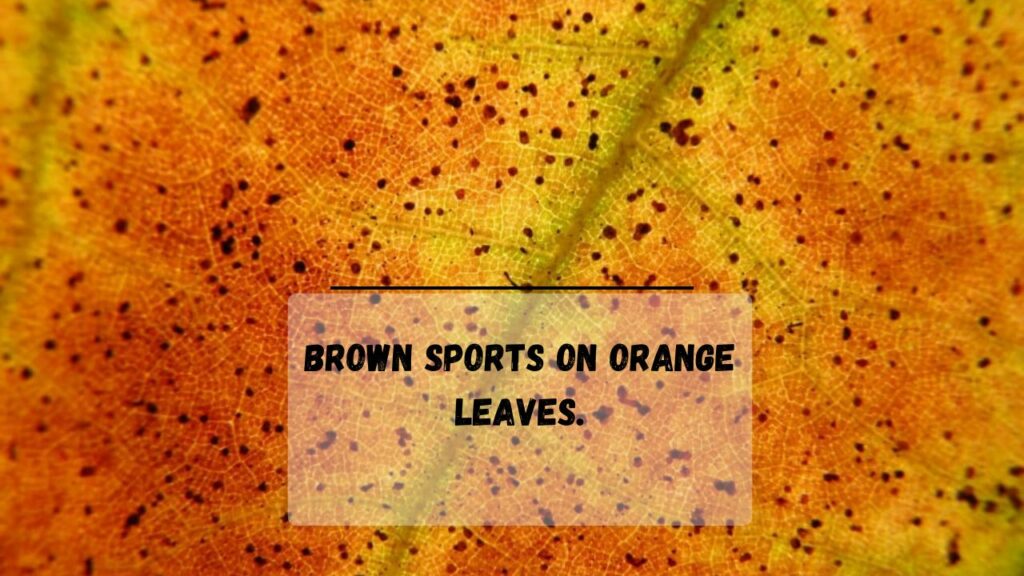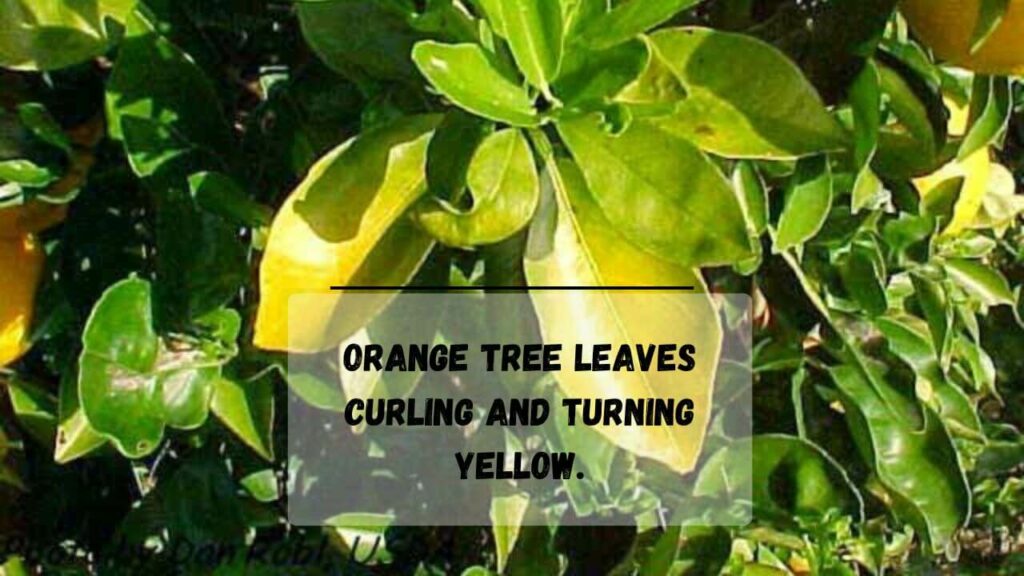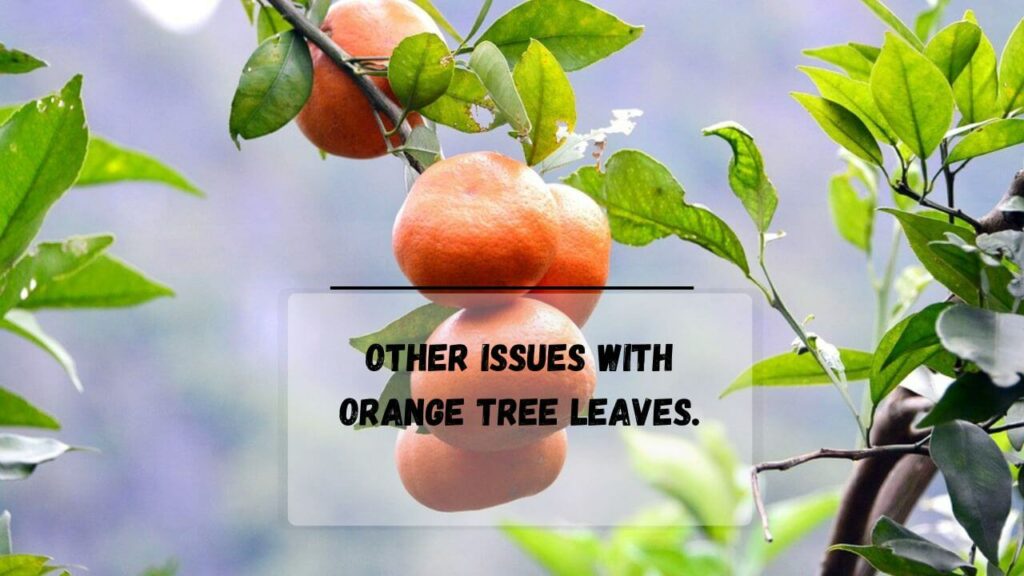
Keeping an orange tree healthy for good fruit production and overall growth is essential. It’s not uncommon to see brown spots on orange trees or yellow leaves on orange trees due to an underlying disease or other factors.
If you notice yellow leaves on orange trees, many factors can be at play. It would help if you looked for signs of diseases and pest infestation causing this issue. Sometimes an orange tree leaves color changes to yellow due to environmental stress or lack of nutrients.
In this article, we will not only learn the significant causes of color change in orange tree leaves but also what you can do to prevent further and ensure healthy Orange trees for good fruit production.
Yellow Leaves On Orange Trees.
As I told you earlier, yellowing in Orange tree leaves can be caused due to a variety of factors; here is what you need to know.
Causes
- Nutrient Deficiency: A lack of certain nutrients in the soil may lead an orange tree to change its color to yellow. The most common nutrient deficiency that leads to yellowing leaves in orange trees is a lack of nitrogen, iron, or magnesium.
- Pest Infestation: Like any other tree, orange trees are also prone to pest infestation, like aphids that suck on the SAP from the leaves, which might cause it to turn yellow and eventually fall off.
- Overwatering: Maybe you are watering your Orange Street too much or too often, leading its root to support it & turn its leaf color yellow. Overwatering can also lead to water-logged soil, further encouraging the risk of root rot.
- Diseases: Many diseases, like anthracnose, powdery mildew, etc., may also cause orange tree yellow leaves.
- Underwatering: Maybe your tree needs to get the proper moisture from the soil due to underwatering or a scorching climate. In the summer season, the orange tree will need more water.
It is very important to inspect the tree carefully and look for signs of test infestation or underlying disease to diagnose the problem. If you notice yellow leaves with green veins, it directly indicates a nutrient deficiency.
Other than this, you will see tiny holes in the leaves or sticky residue On The Leaves along the branches if it is suffering from pest infestation. Therefore here is what you need to do to solve the issue of yellow leaves on orange trees.
Solution
To fix the yellow leaves on orange trees, you must first find the exact cause & treat it according to the following.
- If the cause is overwatering, consider decreasing the watering frequency for your orange tree to recover. It is essential to plant a tree in well-draining soil. That doesn’t mean a water log. If this is the cause, I recommend you also look for the signs of tree rot root.
- On the other hand, if you suspect a nutrient deficiency, fertilize the orange tree with a balanced slow-release fertilizer. It is essential to do a soil test before putting in any specific nutrients.
- Get an appropriate pesticide if you notice any small spots on the leaves while Yellowing. You can also encourage natural predators like lacewings and ladybugs to control the pest population on orange trees.
Brown Spots On Orange Leaves.

Like the orange tree yellow leaves problem, there can be various factors at play causing brown spots as well. Here is what you need to look at to find the exact cause of brown spots on orange tree leaves.
- Fungal Diseases: Many fungal diseases can affect a tree’s growth and cause brown spots on its leaves. The most common fungal infection of orange trees tends to be botrytis and Alternaria.
- Sunscald: If you have kept your Orange tree exposed to direct sunlight or high temperature, it will lead to sunburn and sunscald, which might be why Orange tree leaves turn yellow with brown spots.
- Pest Damage: Many types of mites and scaly insects feed on your orange trees. Leaves SAP is weakening its branches. Pest investigation can also be the culprit of orange tree leaves with brown spots.
To properly diagnose this issue, I recommend you to look for signs of fungal diseases like Alternaria or signs of sunscald. If you notice brown spots surrounded by yellow tissue, it is a fungal disease that requires professional treatment.
On the other hand, if the brown spots are accompanied by tiny holes in the leaves or sticky residue On The Leaves/branches, you will need to get pest control.
Solution
It is better to treat the orange tree with a fungicide to solve the issue. Ensure you’re following the label’s instructions carefully and getting the one specializing in treating a particular type of fungus your tree is suffering from.
Also, make sure to prune away all damaged and dead branches to prevent the spread of disease. Proper care and maintenance will help you, in the long run, to avoid this issue from recurring.
If the problem is a pest, you know what to do. If your orange tree leaves are not recovering to their normal state, I recommend you, call an arborist. Even though an arborist consultation cost may make a dent in your pocket, it will be worth the price.
Orange Tree Leaves Curling And Turning Yellow.

If your Orange tree leaves are turning yellow and Curling, other factors can be at play that we have yet to discuss. In addition to all the reasons I have mentioned above, there are other causes of orange tree leaves curling and turning yellow.
Causes
- Extreme Temperature: Protecting a tree from direct sunlight is essential. Drastic temperature change may cause the orange tree leaves to not only turn yellow but also curve to save their energy and prevent giving birth.
- Wind Damage: Any bad weather condition may also cause an orange tree to leave Curling and turn yellow.
- Drought Stress: If your tree is not getting the proper amount of water from its soil, especially on the hotter days, you will notice yellow curly leaves on your tree.
- Water Stress: You may be over or underwatering the tree, which may lead to Curling and yellow leaves on orange trees.
- Improper Pruning: It is important to avoid improper pruning or pruning, which may also cause the orange tree to turn its leaf’s color yellow and curl.
Solution
Firstly, please provide your Orange free with proper fertilization. Make sure to get a fertilizer that is not only balanced but also specially formulated for Citrus trees. In addition, If your tree shows signs of any pest infestation or disease, you must take action as necessary to treat it.
You should also seek advice from a professional to determine the exact cause of the disease and appropriate treatment options. Also, It is important to follow the proper technique and approach using the recommended pruning shear to prune the tree correctly.
Consider pruning with the appropriate process. Using a good pruning shear will promote healthy air circulation around the tree. I advise you to only water your orange tree if its soil looks dry and crumbly.
It is important to avoid overwatering or underwatering. If you notice the yellowing of the leaves with scorched edges and premature fall, there is a need for water. Check the soil’s moisture level from time to time to determine if it needs water.
Also, ensure proper protection for your Orange tree, especially in extreme temperatures, drought, or strong wind. It is better to provide a 2-3 inch layer of mulching to the orange tree base to retain moisture and avoid temperature for better growth and fruit production.
If the issue persists or you’re concerned about the health of your Orange tree, it’s never wrong to seek the advice of a professional. I recommend you consult an arborist who can help you provide a proper diagnosis and appropriate treatment options to restore the health of your orange tree.
Other Issues With Orange Tree Leaves.

Orange Tree Leaves Turning Black: If your tree leaves are turning black, there is something wrong with its head. In significant cases, it is a sign of disease like citrus canker or Alternaria brown spot.
Black leaves can also take place due to cold damage or over-fertilization. I recommend you apply fungicides and avoid overfertilization. Also, mix you’re to keep the orange tree in proper temperature control and good air circulation around. Consider pruning and removing infected leaves before applying fungicides.
Orange Leaves Turning Upside Down: when an orange tree leaves turn upside down, the most common cause tends to be pest infestation like mites or scale insects. Orange tree leaves turning upside down could also be due to a nutrient deficiency, water stress, or strong winds.
Depending upon the cause, you should take appropriate measures like watering, fertilizing the tree, applying pesticides, and adding mulch to protect it from strong winds.
Orange Tree Leaves Turning Yellow and Falling Off: If your Orange tree leaves are yellowing and falling off, it can be part of a typical tree life cycle. However, if you notice excessive yellowing and defoliation, there is definitely something wrong with its environment or health.
Look out for signs of environmental health stress and consider improving the soil quality, adjusting water frequency, fertilizing with the proper nutrients, and treating it with the correct pesticides. Depending upon the issue, you should take appropriate measures to avoid environmental stress and prevent orange tree leaves from yellowing and following off.
Conclusion
Yellow and brown spots on orange tree leaves can be caused for numerous reasons. It would help if you considered providing appropriate temperature, humidity, and good air circulation to prevent environmental stress that might lead to leaves yellowing and browning.
Nutrient deficiency and pest infestation sometimes cause yellow leaves with brown spots or tiny holes. In addition, it is also essential to look for signs of diseases that might be causing the tree leaves to turn yellow, brown, black, or upside down.
If you monitor your Orange tree regularly and take appropriate measures, the recovery will be better and quicker. Pay attention and care to ensure healthy and productive orange trees that produce many fruits.
If you find this article helpful, share this. Your share will help many people with any particular issue they are facing now—other valuable guides on tree care and arboriculture. See you in the next post, till then, take care and goodbye.
